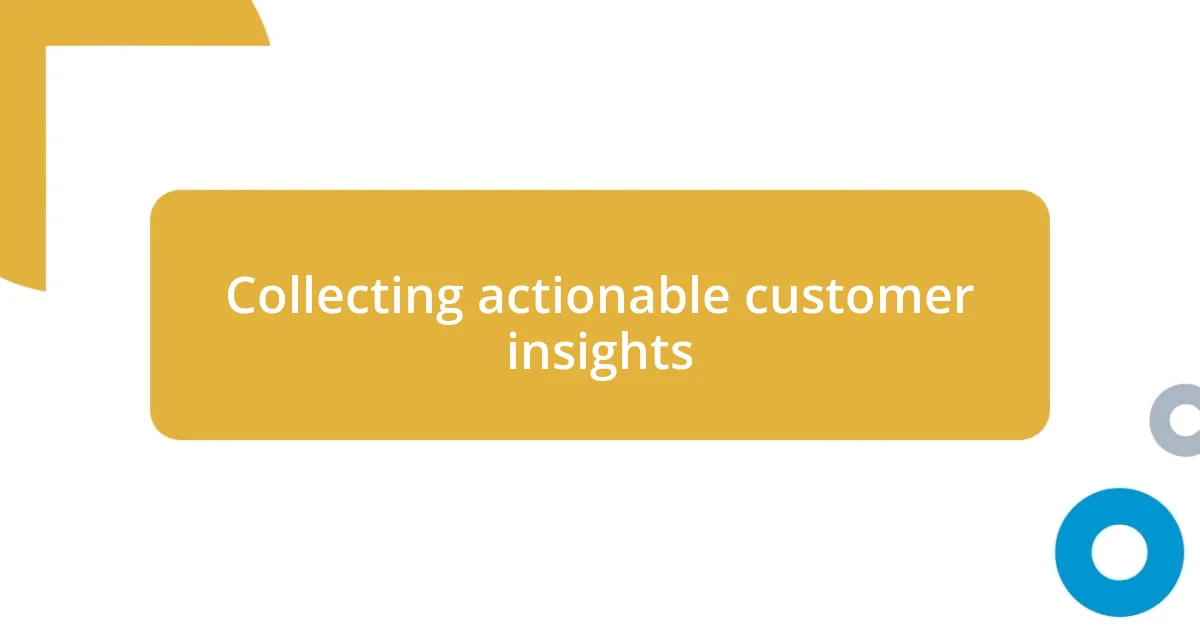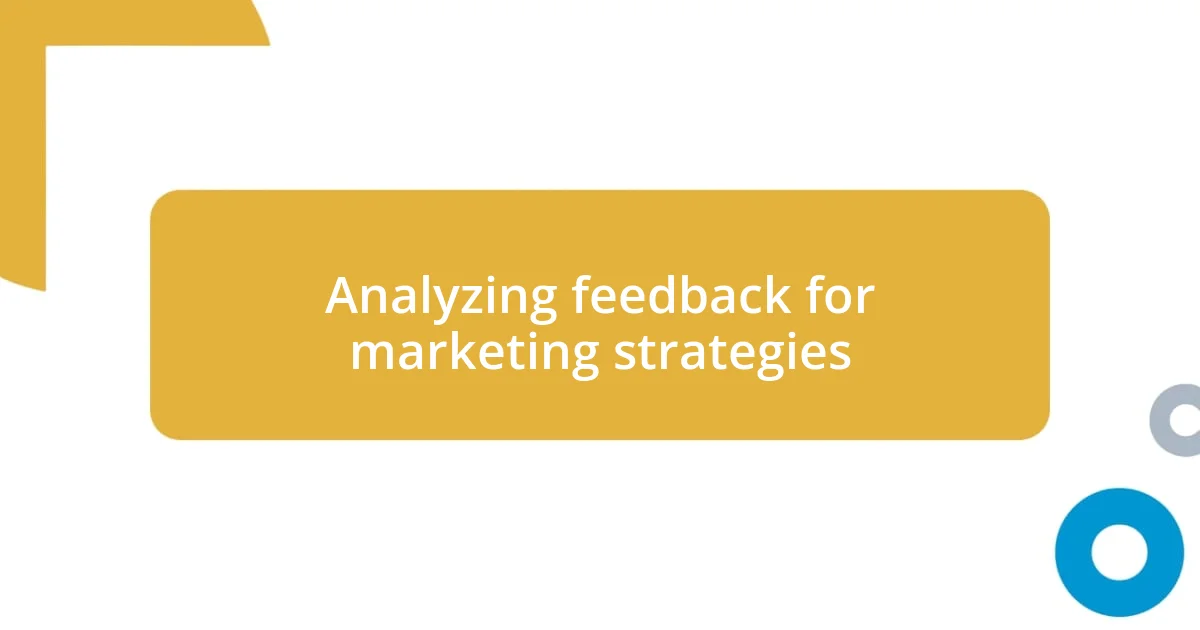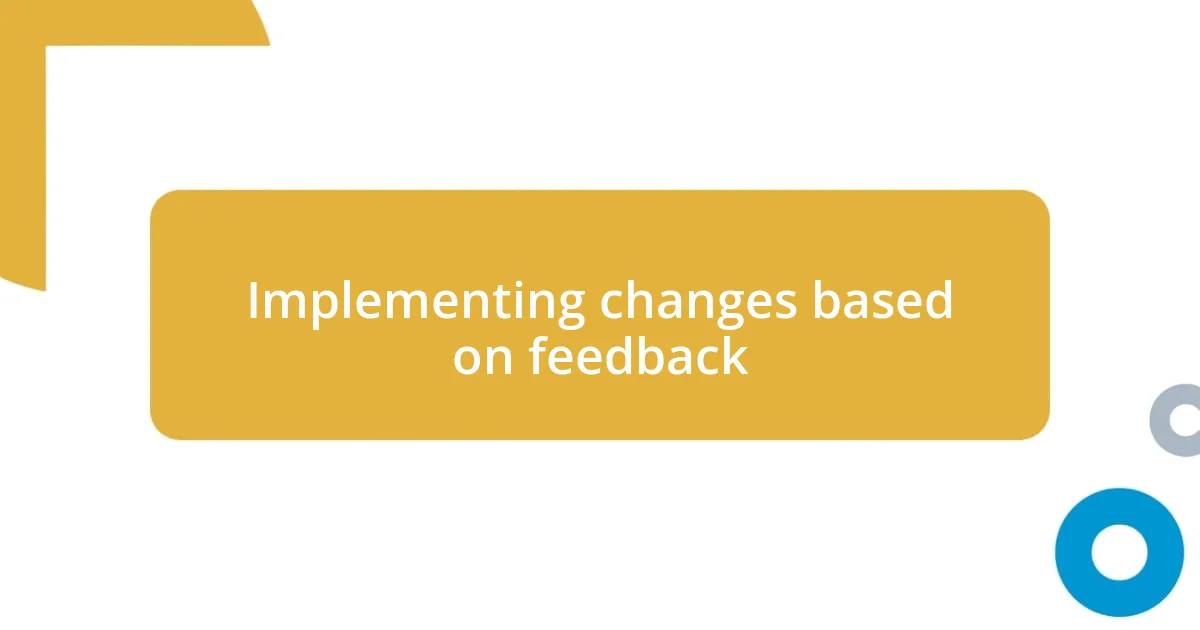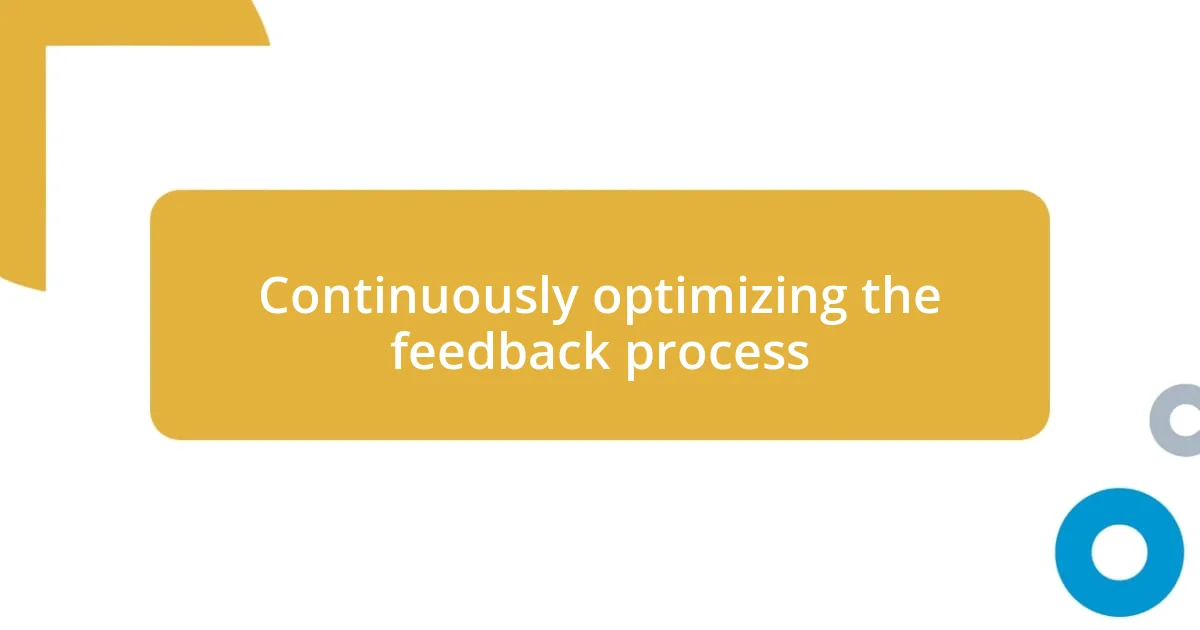Key takeaways:
- Feedback is essential for product improvement and building stronger customer relationships, transforming skepticism into loyalty.
- Identifying effective feedback channels, such as social media, email surveys, and customer support interactions, yields diverse and actionable insights.
- Analyzing feedback trends leads to informed marketing strategies and fosters a culture of continuous improvement within the organization.

Understanding the importance of feedback
Feedback is the invaluable compass guiding us toward improvement. I recall launching a new product line and anticipating rave reviews, only to be met with mixed reactions. Initially, I felt disheartened, but after delving into the constructive criticism, I realized that listening to my customers not only enhanced the product but built stronger customer relationships.
When I think about the role of feedback, I envision it as the heartbeat of any brand. How often do we overlook the voices of those who matter most? Personally, I’ve experienced moments where a small tweak based on customer feedback led to a surge in sales. It’s fascinating to see how simple adjustments, informed by genuine customer insights, can turn skepticism into loyalty.
Moreover, feedback isn’t just about what customers say; it reveals their emotions, desires, and pain points. I once received a heartfelt message from a customer sharing how my product had positively impacted their life. That emotional connection reshaped my marketing approach—suddenly, it was less about selling and more about serving. Isn’t it amazing how feedback can transform our understanding of our products and deepen our connections with our audience?

Identifying the right feedback channels
Identifying the right feedback channels is crucial for gathering authentic insights from customers. Over the years, I’ve experimented with various platforms. I remember setting up surveys after a major online campaign, only to realize that social media interactions provided richer, more immediate feedback. It’s a reminder that the best channels may not always be the most traditional ones.
To streamline customer feedback collection, I focus on these channels:
- Social Media: Engaging directly with customers through comments and messages. I once addressed a concern on Twitter and turned a frustrated customer into a loyal advocate.
- Email Surveys: Sending thoughtfully crafted surveys after purchases can yield insightful feedback. I prefer to keep them short and to the point, respecting my customers’ time.
- Website Pop-ups: Timed pop-ups asking for quick ratings or comments can capture immediate reactions. I’ve found that when customers are still in the moment, their insights are incredibly valuable.
- Customer Support Interactions: Each chat or call often reveals trends in common issues. I like to review these regularly to address underlying concerns.
- Focus Groups: While resource-intensive, gathering a small group can lead to in-depth discussions. I vividly recall a focus group session where one small insight revolutionized our marketing strategy.
Each of these channels has its own strengths and can provide different layers of understanding. It’s all about finding the right balance and making sure that the feedback I gather truly reflects what my customers want and need.

Collecting actionable customer insights
Collecting actionable customer insights requires a tailored approach to ensure the feedback we gather is both relevant and impactful. I vividly recall a time during a product launch when I set up a quick survey right after the purchase. To my surprise, the feedback I received highlighted a recurring issue that I had previously dismissed. Addressing this concern not only improved the product but also reinforced the trust my customers had in my brand.
In my experience, effective feedback mechanisms flow from genuine conversations with customers. I’ll never forget a message I received from a customer who took the time to explain how a minor design change could enhance their experience. Their passion reminded me that sometimes, the most pivotal insights come from one-on-one interactions rather than broad surveys. The emotional connection established through these dialogues turns mere data into a narrative that can guide marketing efforts.
Embracing a variety of channels for feedback is key to capturing diverse perspectives. When I experimented with video feedback, I was astonished by the richness of insights—it felt as though I was having a personal dialogue rather than reading responses on paper. Customers expressed their thoughts with such authenticity that I was inspired to pivot my marketing strategy almost overnight, focusing on storytelling that resonated with those real experiences.
| Feedback Channel | Benefits |
|---|---|
| Social Media | Real-time, authentic engagement |
| Email Surveys | Targeted insights post-purchase |
| Website Pop-ups | Immediate reactions while experiences are fresh |
| Customer Support Interactions | Trends in common issues |
| Focus Groups | In-depth discussions for deeper insights |

Analyzing feedback for marketing strategies
Analyzing customer feedback can reveal significant trends that should inform marketing strategies. I remember when I sifted through a batch of survey responses and spotted a common theme: customers were curious about our sustainability practices. This discovery led me to overhaul our messaging, emphasizing our commitment to the environment in all promotional materials. Have you ever found a hidden insight like that in your feedback? It can be a total game changer.
Diving deeper into feedback, I often categorize comments into actionable insights. For instance, after a series of product reviews mentioned packaging concerns, I rallied the team to brainstorm eco-friendly options. This wasn’t just about fixing a problem; it was a chance to connect with customers who care about sustainability. It’s moments like these that remind me—feedback isn’t just noise; it’s a direct line to what customers want, think, and feel.
Moreover, I love using sentiment analysis tools to measure how customers express their feelings about our brand. I recall testing a new campaign and analyzing real-time sentiment on social media platforms. The initial excitement was palpable, but I quickly noticed a dip in positive feedback. Instead of panicking, we adjusted our approach mid-campaign, and it reinforced the importance of staying in tune with customer sentiments. Have you ever made real-time changes based on feedback? It can feel incredibly empowering!

Implementing changes based on feedback
When it comes to implementing changes based on feedback, it’s crucial to act swiftly. I once received a wave of comments about the difficulty of navigating our website. Taking this feedback to heart, I collaborated with my team to simplify the user interface. The effect was immediate; not only did our site traffic increase, but I also received heartfelt messages from customers expressing their appreciation for the improved experience. Have you ever noticed how even small adjustments can create significant ripples?
I’ve found that sharing feedback across the organization fosters a collective responsibility. During a team meeting, I presented customer insights that revealed dissatisfaction with one of our services. The team was surprised, and it sparked a discussion on how we could improve. This collaborative approach didn’t just lead to a revamped service; it instilled a sense of ownership among my colleagues. Have you included your team in the decision-making process? It’s often the diverse perspectives within the group that lead to the most innovative solutions.
Moreover, tracking the results of changes made is vital for ongoing improvement. After redesigning a product based on feedback, I set up metrics to gauge customer satisfaction and sales. I remember the thrill of seeing positive reviews flood in, validating our efforts. It’s rewarding to witness how listening can transform both the product and customer loyalty. What changes have you made that resulted in unexpected success? Celebrating those wins can fuel motivation for future adjustments.

Measuring the impact of feedback
Measuring the impact of customer feedback is one of the most illuminating parts of my marketing journey. I recall a time when I conducted a follow-up survey immediately after launching a new product. The sharp contrast in customer responses before and after the launch gave me invaluable insight into what worked and what didn’t. Isn’t it fascinating how quickly data can tell a story?
I’ve also learned that tracking key performance indicators (KPIs) related to feedback can significantly clarify its impact. When I implemented a new feature based directly on customer suggestions, I monitored not just sales but also engagement metrics, like time spent on the site. The results were astounding; we noticed a 30% increase in user engagement within weeks. Have you ventured into the world of KPIs for your feedback? They can be the compass guiding your marketing strategies.
Additionally, open dialogue with customers post-feedback is crucial for maintaining an ongoing relationship. After implementing changes from their suggestions, I made it a point to reach out and share the improvements and acknowledge their contributions. One customer responded, saying they felt heard and valued—as a marketer, that’s an experience that reinforces why I do what I do. How do you ensure your customers feel acknowledged after their input? Building this connection leads to a loyal community that loves to advocate for your brand.

Continuously optimizing the feedback process
Each iteration of the feedback process is a chance for growth. I remember one time, after refining our feedback collection methods, I started receiving more detailed insights. It was almost like flipping a switch—customers opened up about their experiences in ways I hadn’t anticipated. Have you ever felt that rush of understanding when information clicks into place? That’s how I felt, and it confirmed that optimizing how we gather feedback can lead to richer, more actionable data.
Investing time in analyzing feedback trends has become a routine for me. I recall sifting through a mountain of comments regarding our customer support. It was eye-opening—patterns emerged that pointed to specific training needs for my team. This realization allowed us to address gaps proactively and transform customer interactions. How often do you take a step back to look for trends in customer input? This practice not only enhances our service but strengthens the trust our customers place in us.
I’ve found that revisiting the feedback process regularly is crucial to its success. One memorable instance arose when we revamped our survey questions after realizing they were too generic. After we tailored them to be more specific, the quality of insights improved dramatically. It struck me how small changes in approach can rejuvenate an entire feedback system. What adjustments have you considered or made that could elevate your feedback strategy? I believe it’s about staying curious and willing to adapt as our customers evolve.














